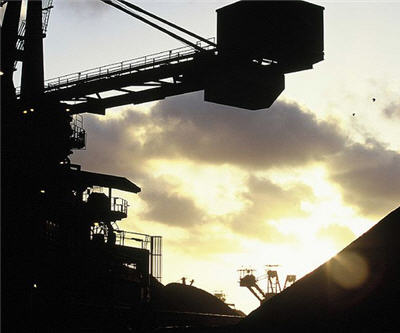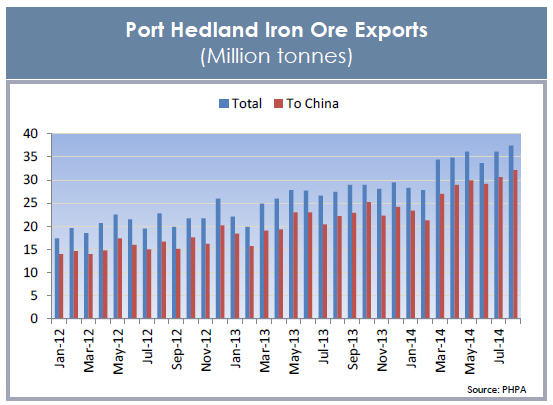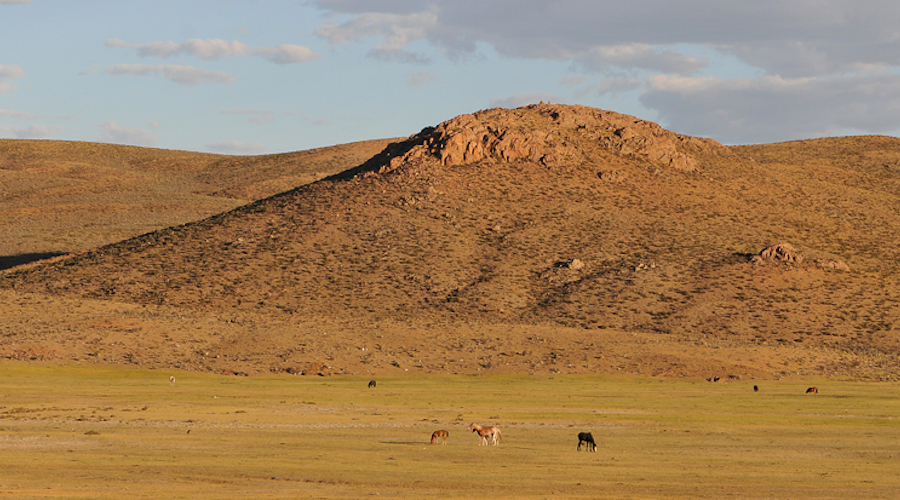Iron ore price in stunning turnaround

After weeks of relentless selling benchmark iron ore prices soared on Monday, enjoying the strongest one-day gains in more than a year.
Northern China 62% Fe imports tracked by The SteelIndex jumped $3.20 or 3.9% to trade at $85.20 a tonne, lifting the the steelmaking raw material off a string of five-year lows set this month.
After hitting a high of $158.90 in February, the industry was jolted on March 10, when iron ore suffered the worst one-day decline since the 2008-2009 financial crisis, cratering 8.3% in a single session.
The recovery from there was swift, but by mid-June ore was sliding again and quickly became a one way bet as the market fretted about a flood of new supply just as demand in top consumer China slowed.
The price of iron ore remains 36.5% weaker than at the start of the year, but some analysts believe the drop may have been overdone.
The Wall Street Journal reports Morgan Stanley believes prices could drop as low as $70 but the investment banks sees “cost support” at between $90 to $100 a tonne.
Morgan Stanley believes the price “may rebound towards $90 per tonne by the end of year as China’s seasonal demand typically weakens, before picking up again in the fourth quarter.”:
“We are of the firm belief that an adequate proportion of supply from the top end of the cost curve will come out, flatten the curve and ultimately secure levels of cost support.”
Last week investment bank Goldman cut its price forecasts by $10 to an average $80 a tonne next year, but predicted only $1 a tonne declines over the next two years.
The steep declines in the price is as a result of a surge in low cost supply, particularly from Australia. Monthly iron ore volumes shipped through Port Hedland hit a new record in August after rising 38% year on year.
Australian producers, BHP Billiton, Rio Tinto and Fortescue, plan to add 170 million tonnes of output this year, about 7% of global supply in 2013 and about 11% of global production outside China.
Supply from Australia could jump again next year when Gina Rinehart’s $10 billion Roy Hill project starts shipping 55 million tonnes-a-year.
At the same time top iron ore miner Vale is ramping up output in Brazil from the massive expansion of its Carajás complex, while Anglo American is nearing production at its 26 million tonne per year Minas-Rio project in the country.
Goldman’s report which came out last week estimates that due to “the structural nature of the surplus and a weak demand outlook in China make a recovery in prices unlikely.” The bank’s research points to the global glut tripling to 163 million tonnes in 2015 from 52 million tonnes this year, and jump again to 245 million tonnes in 2016 and 295 million tonnes in 2017.
The majors can still make money at these prices – ore from the Pilbara region is estimated to cost just $20-25 per tonne to extract while Vale is progressing with its target of production costs below $20 a tonne.
Even including freight and insurance costs and royalties, the final cost rises to only around $50 – $60 a tonne into China and $10 – $15 on top of that via the longer route from Brazil.
In August, Sam Walsh, CEO of Rio said he expects 125 million tonnes of high-cost iron ore supply to be taken out of the market this year, as the lower price forces out low-grade Chinese mines and smaller producers cut output.
The SteelIndex quotes Ian Roper, an analyst at the investment bank CLSA, believes as much as 200 million tonnes could exit the market by the second quarter of next year. A further 115 million tonnes of additional cuts may be required through 2016-2017 to achieve balance, but “a slow response from miners could pressure prices below marginal cost for a period.”
Last week Australian 3 million tonne per year producer Western Desert Resources called in administrators.
Western Desert follows others which have fallen by the wayside including Sweden’s Northland Resources, Australia’s Cairn Hill and Canada’s Labrador Iron Mines. West African iron ore producers like African Minerals and London Mining are also struggling to ride out the price slump.
Demand in China for high-quality ore is still strong. The country imported 8.5% more ore in August than a year earlier, but total imports for the year – expected to grow by less than 50 million tonnes – would simply be swamped by the additional tonnage.

Source: The SteelIndex
Sunset over Port Hedland by Eugene Regis
More News
Ghana orders foreigners to exit gold market by April 30
April 14, 2025 | 10:13 am
{{ commodity.name }}
{{ post.title }}
{{ post.date }}




3 Comments
johnnybleiss
This rally may have legs with Indian and Chinese mines shutting coinciding with China going into the 2half rush to reach GDP targets.
dakarza
Of course it should move up since there is so much pessimism out there. Remember: Iron ore prices are approx 50% from its all time high. However until property market moves up, which is very unlikely, thou. temporarily possible based on extraordinary money injection via credit markets (1 Trillion CNY) just recently, iron ore prices wont really follow a consistent progression.
India as possible new participant and new vast chinese mines under development & under production (400 M tons) could become major factors too. I think it is all benefiting china which is saving money by the overcapacity for now.
Itabirite
Hard to believe anyone would call $85 a ‘stunning turnaround’. More like bouncing off bottom?